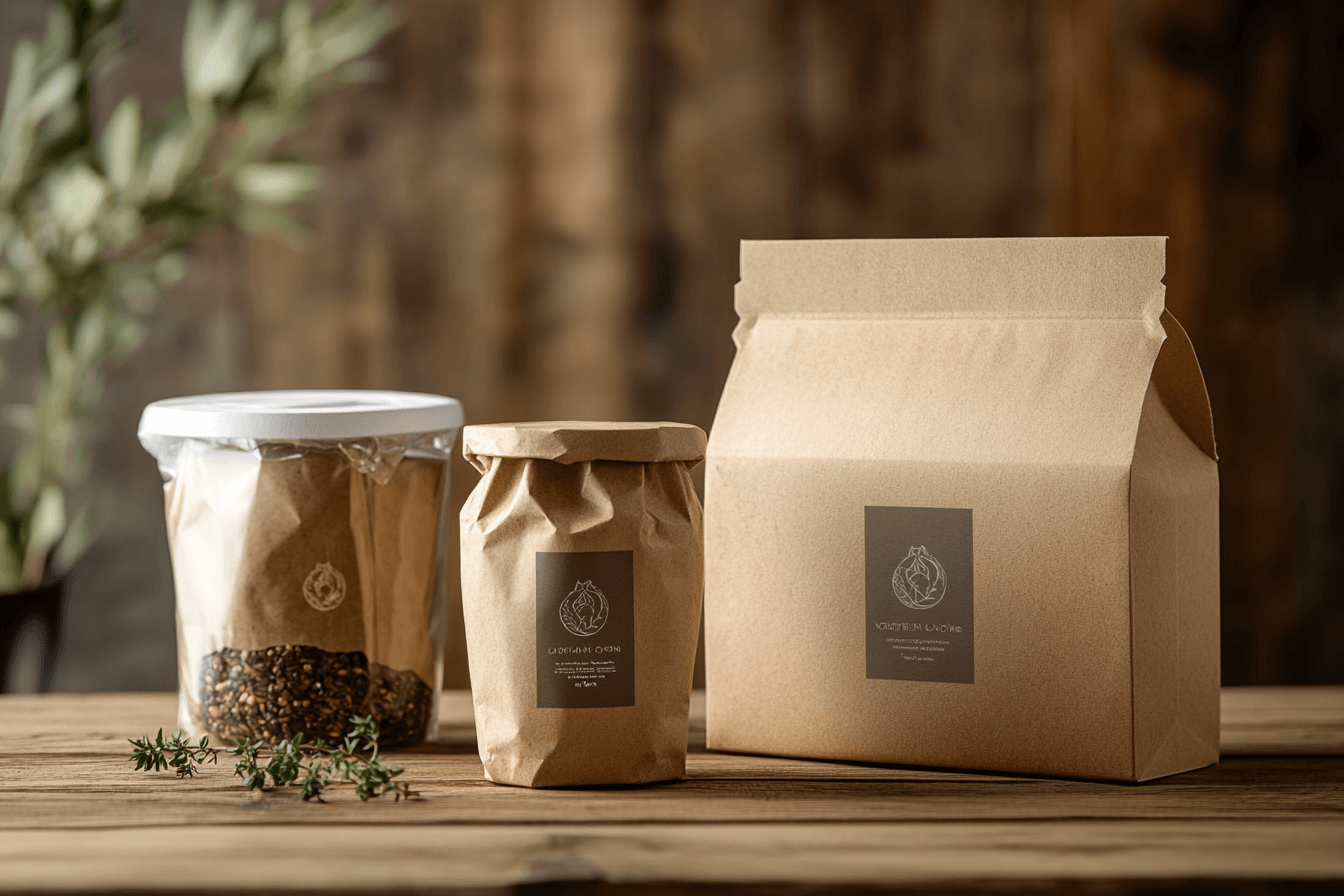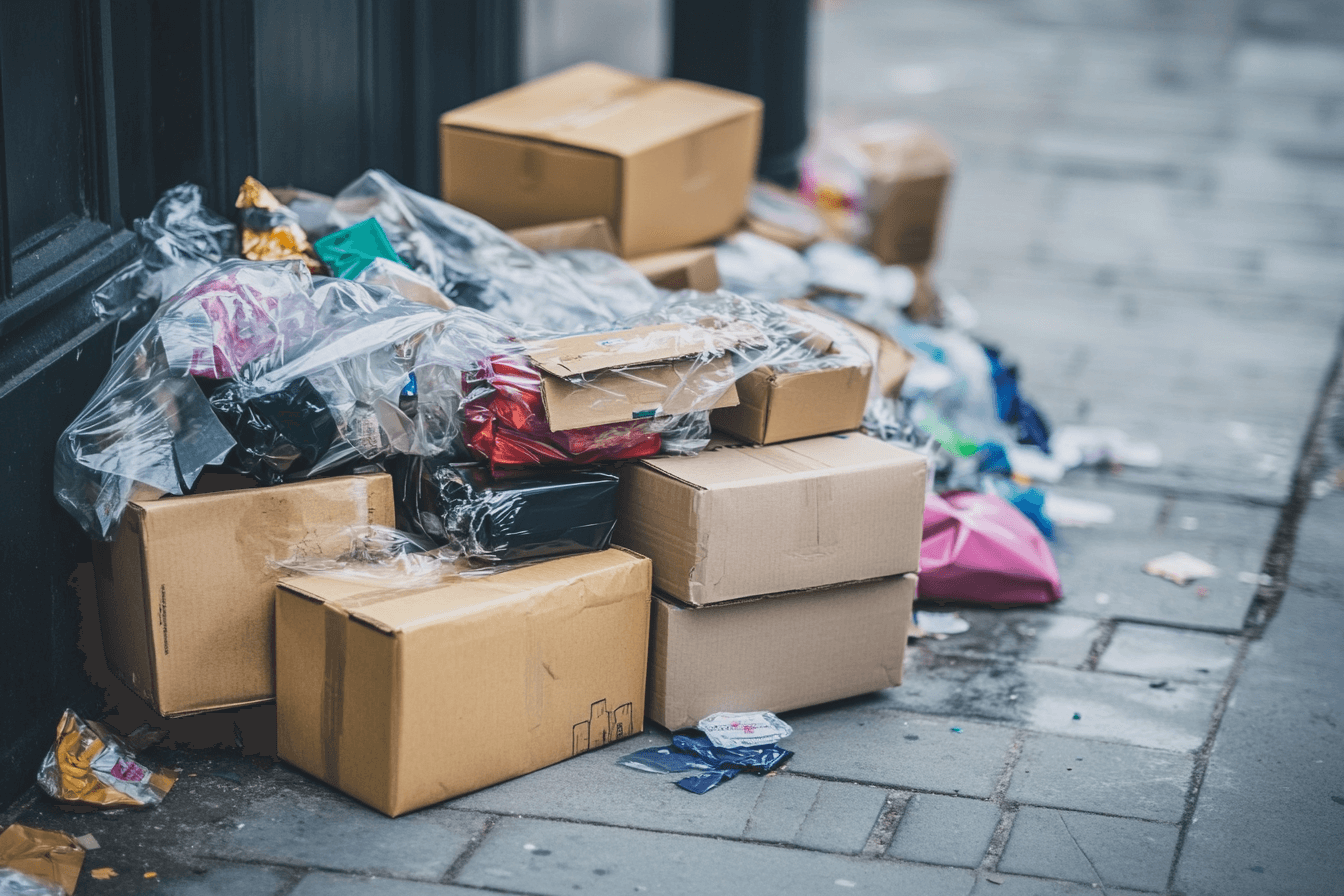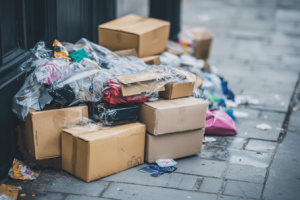The growing impact of unboxing culture
The unboxing trend, once an internet novelty, has evolved into a core part of consumer culture. It’s not just about receiving a product it’s about the presentation, the feel of opening it, and the visual journey from box to item. Social media platforms like YouTube, Instagram, and TikTok are filled with carefully recorded unboxing moments, often showcasing layers of packaging designed to impress.
This cultural shift has had an unexpected consequence: a dramatic increase in packaging waste. As brands compete to deliver an “experience” rather than just a product, the amount of material used in packaging has surged. What was once a basic cardboard box now includes branded wrapping paper, foam inserts, plastic sleeves, ribbons, and sometimes even confetti.
How packaging became part of the product
In many industries especially fashion, cosmetics, tech, and luxury goods packaging is seen as a vital extension of the product. It’s not uncommon for consumers to post videos or photos of the packaging itself before even reviewing the item inside. This pressure to create a memorable first impression has led brands to invest heavily in elaborate unboxing experiences.
Unfortunately, this shift has come at an environmental cost. Materials that once served only protective purposes are now part of a performance, and they’re often not recyclable or reusable. Even worse, much of this packaging is used once and discarded within minutes.
The rise of waste from e-commerce and luxury branding
The convenience of online shopping has dramatically increased the volume of shipped goods worldwide. With each order comes packaging, often double or triple-layered to ensure a product arrives intact and looking pristine. For luxury brands, the goal is to preserve both the product and the prestige of presentation.
This focus leads to excessive use of materials: multiple boxes, filler materials, decorative elements, and branded outer packaging. The result is a massive spike in single-use waste, most of which ends up in landfills or incinerators, especially when it’s not recyclable or properly sorted.

What’s inside the box: materials and their footprint
To understand the environmental impact of unboxing, it’s essential to examine the materials commonly used and their ecological consequences.
Plastic, foam, and non-recyclables
Polystyrene foam, plastic wraps, bubble mailers, and synthetic ribbons are frequently used in packaging, especially for cushioning and decorative appeal. These materials are typically non-biodegradable and often end up polluting land and marine ecosystems. Even when technically recyclable, many municipalities lack the infrastructure to process them effectively.
Plastics are also derived from fossil fuels, meaning their production contributes to greenhouse gas emissions. When disposed of improperly, they break down into microplastics, which infiltrate water sources and food chains, posing a long-term risk to human and animal health.
Paper and cardboard: not always eco-friendly
Paper-based materials, often perceived as more sustainable, can also carry a heavy environmental cost. While cardboard and kraft paper are generally recyclable, the production process consumes significant water and energy. Additionally, if packaging is laminated, dyed with metallic ink, or coated with plastic, it becomes harder to recycle.
Excessive branding and decoration can turn an otherwise recyclable box into landfill waste. Many luxury brands prioritize visual identity over recyclability, opting for glossy finishes, embossing, or glitter that make the packaging attractive but environmentally problematic.
Hidden costs of the unboxing experience
Beyond the visible materials, the environmental impact of packaging also includes emissions from manufacturing, transportation, and waste management.
Carbon emissions from shipping and returns
Every additional layer of packaging adds weight and volume, which increases fuel consumption during shipping. Multiply this by the billions of packages sent annually, and the carbon footprint becomes staggering. Returns a common part of e-commerce double the environmental toll, as items are often re-shipped, repackaged, or discarded entirely.
Luxury packaging tends to be bulkier and heavier, compounding the problem. While it may enhance the customer experience, it contributes to greenhouse gas emissions across the entire supply chain.
Over-packaging and consumer expectations
As consumers come to expect elaborate packaging, brands feel pressured to deliver increasingly extravagant experiences. This cycle of expectation and excess packaging feeds itself, making it difficult for companies to shift toward minimalism without seeming “cheap” or careless.
Ironically, many consumers who are environmentally conscious still expect premium packaging, highlighting a gap between sustainability values and purchasing behavior. Brands face the challenge of aligning these expectations with more responsible practices.
Toward greener packaging practices
Despite the challenges, many companies are beginning to rethink their approach. Sustainable packaging doesn’t mean bland or boring it means thoughtful design, responsible sourcing, and reduced impact.
Sustainable materials and innovative alternatives
Biodegradable plastics, compostable mailers, recycled paper, and plant-based inks are becoming more widely available. Brands are exploring materials like mushroom packaging, cornstarch foam, and seaweed-based wrap to replace traditional plastic and Styrofoam. These materials break down naturally and pose less harm to the environment.
Some companies are also introducing modular packaging systems that eliminate excess layers and can be reused or returned. Luxury doesn’t have to mean wasteful it can mean smart, beautiful design with purpose.
Minimalist design without losing appeal
Designers are finding creative ways to make minimalism luxurious. Instead of multiple layers of packaging, they focus on a single well-designed box made from high-quality, recycled material. Monochrome color schemes, subtle embossing, and reusable fabric wraps can convey elegance while reducing environmental impact.
Smart packaging such as scannable QR codes that replace printed manuals or authentication cards also reduces paper use and adds a digital layer of engagement. These innovations allow brands to maintain a high-end feel without the traditional waste.
The role of brands and consumer behavior
Sustainable change requires effort from both companies and consumers. While brands control the supply chain and design, buyers influence demand and behavior through their choices and expectations.
Corporate responsibility and packaging policies
Some companies are setting strong sustainability goals, such as eliminating virgin plastic, achieving zero-waste supply chains, or requiring suppliers to use certified materials. Packaging audits, lifecycle assessments, and third-party certifications help ensure that these commitments are more than just marketing claims.
Brands must also educate their customers clearly labeling packaging materials, offering recycling instructions, or even incentivizing returns of packaging for reuse. Transparency and accountability are key to building trust and driving change.
How buyers can drive eco-conscious change
Consumers play a powerful role in shaping industry practices. By favoring brands with sustainable packaging, giving feedback about excess materials, or choosing slower shipping options, individuals can reduce their personal impact and encourage broader adoption of greener solutions.
Even simple actions like properly sorting packaging waste, reusing boxes, or declining unnecessary wrapping can make a meaningful difference. The shift toward sustainable unboxing starts with awareness, followed by mindful choices.
Success stories and real-world innovations
Some brands have already proven that eco-friendly packaging can be effective, beautiful, and commercially successful.
Brands leading the way with eco-packaging
Patagonia, Lush, and Everlane are known for their environmentally responsible packaging efforts. They’ve replaced plastic with recycled paper, removed excess wrapping, and clearly communicate sustainability efforts on their packaging. Luxury brands like Stella McCartney and Gucci are also making strides, using recycled materials and carbon-neutral processes.
These companies demonstrate that a strong environmental stance can enhance brand value rather than diminish it. Consumers increasingly respect and support brands that take sustainability seriously.
Creative approaches that balance luxury and sustainability
Innovative startups are experimenting with reusable shipping containers, collapsible packaging, and even subscription-based systems that allow packaging to be returned and reused. Others incorporate packaging into the product itself for example, a bag that unfolds from the box it arrived in.
By focusing on longevity, recyclability, and design simplicity, these solutions show that it’s possible to balance aesthetic appeal with environmental responsibility. The future of unboxing doesn’t have to be wasteful it can be smart, elegant, and sustainable.







